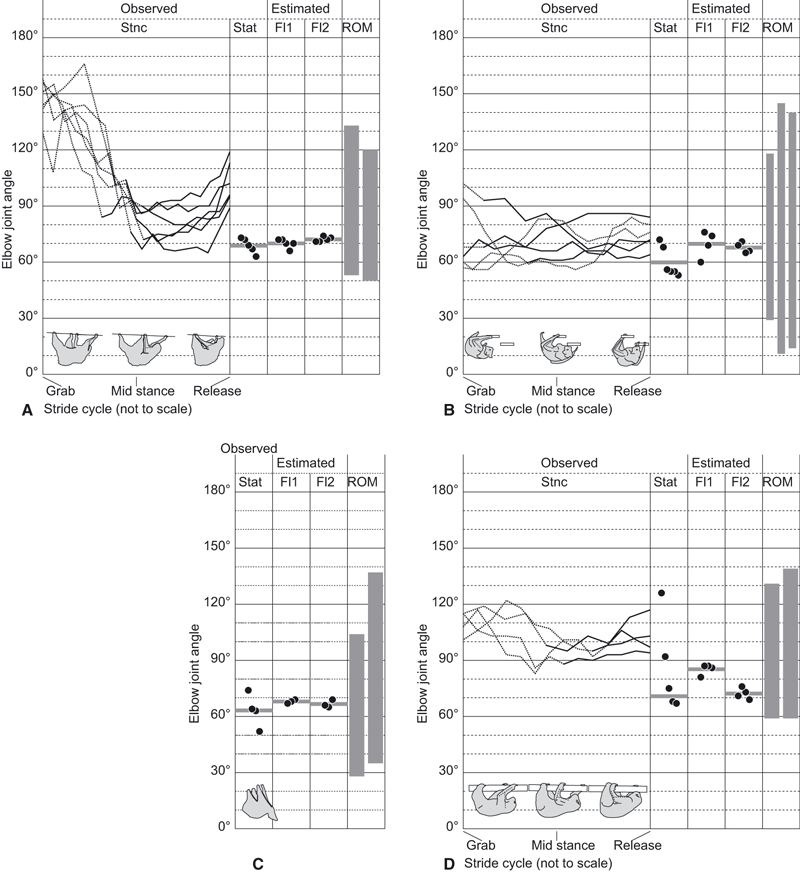Fig. 7.

(A–D) Observed elbow joint angles, including the changes of the joint angle during stance phase (Stnc) and the angle in static postures (Stat), estimated elbow joint angles where the moment arms of the flexors along the brachium (Fl1) and the antebrachium (Fl2) are maximized, and the ranges of elbow joint motion (ROM), are compared for our study taxa of four suspended quadrupeds: (A) Choloepus, (B) Pteropus, (C) Cynocephalus (no Stnc data recorded) and (D) Nycticebus. Solid and dotted lines of the transitions in Stnc indicate, respectively, the portions of the stance phase where the humerus is more abducted (first half) or adducted (second half). The horizontal bar in each section of Stat, Fl1 and Fl2 is a mean value of the measurements.
